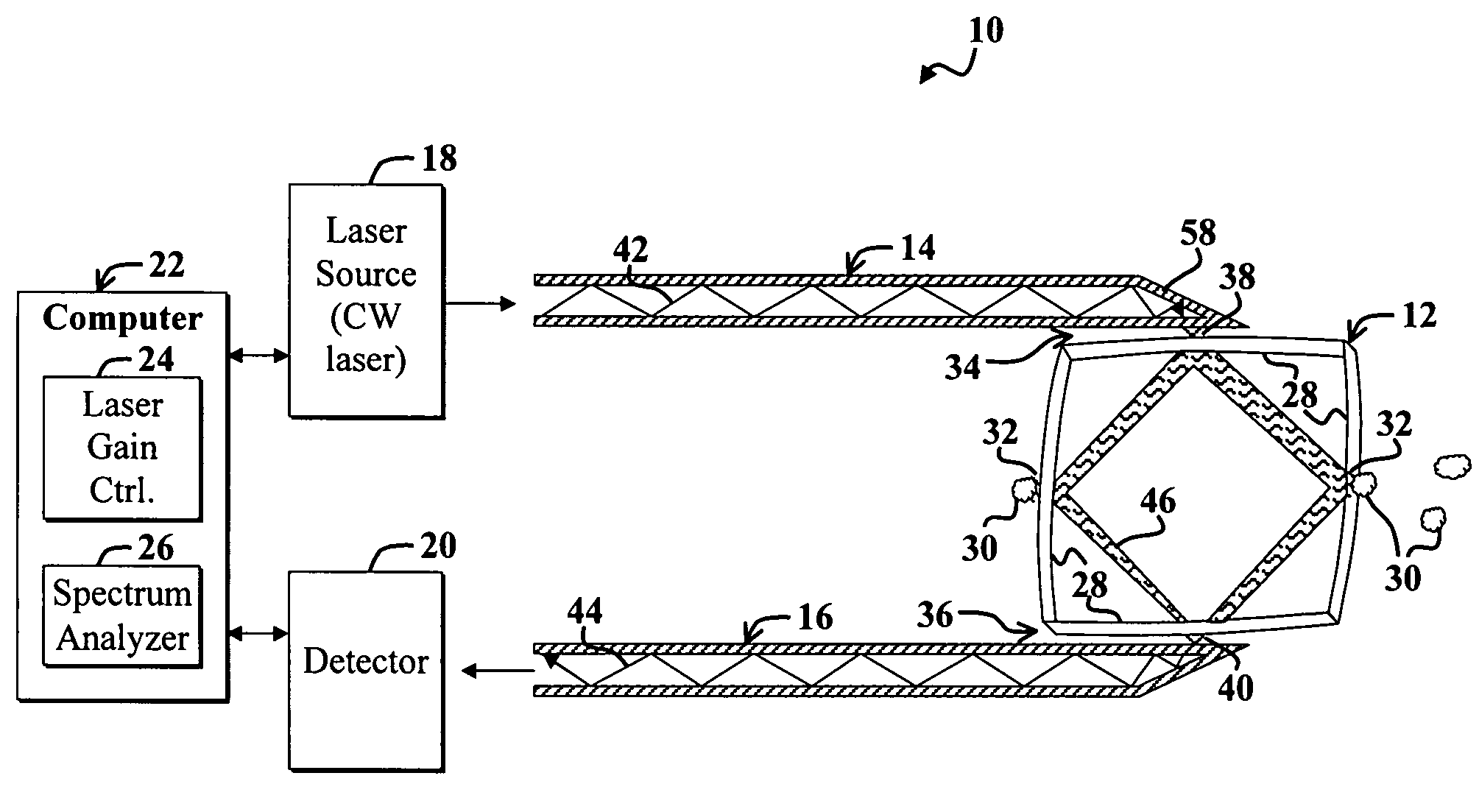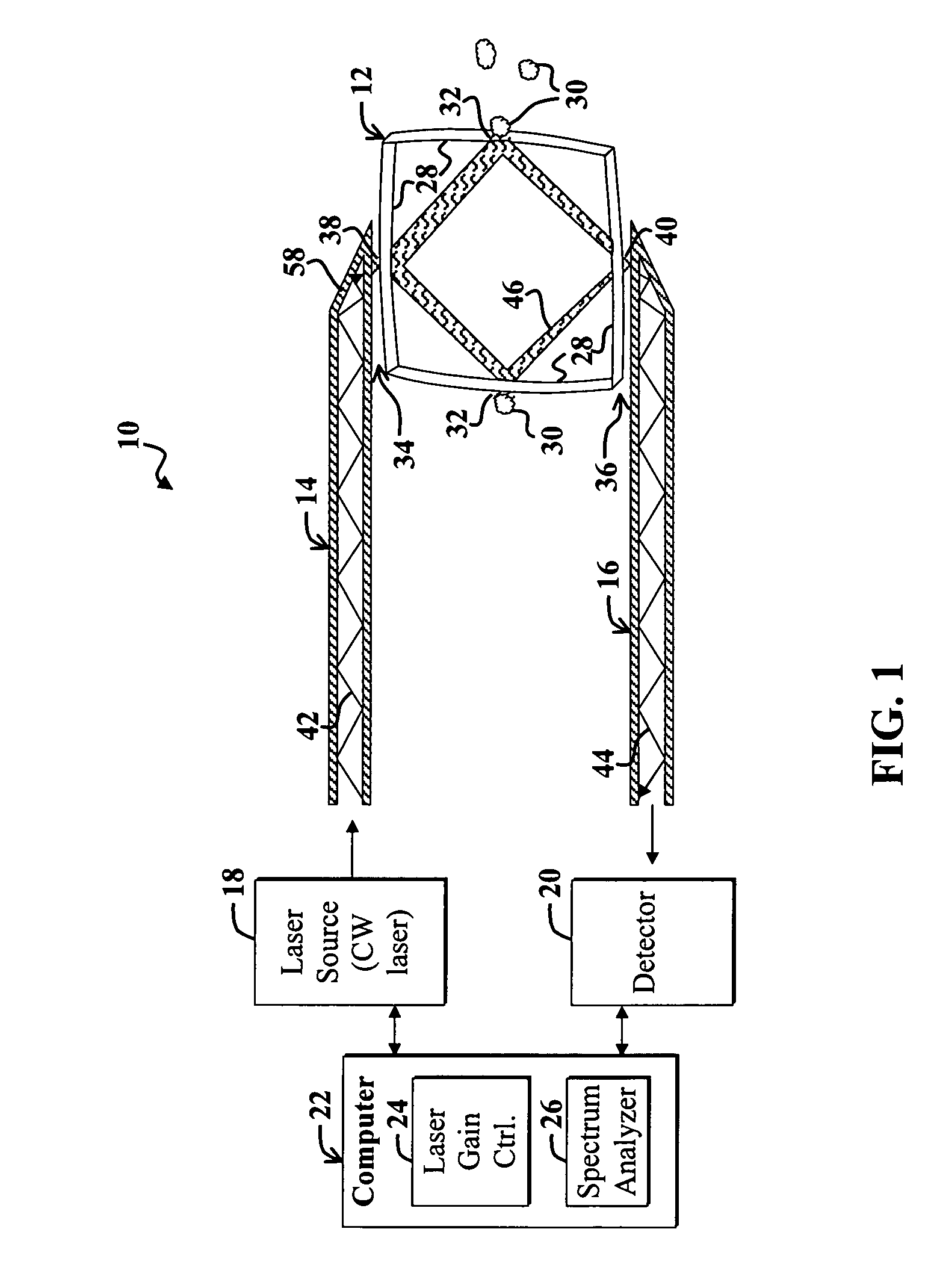Chemical sensor employing resonator-enhanced forbidden-light collection
a raman scattering and chemical sensor technology, applied in the field of chemical sensors, can solve the problems of raman signal degradation, reduced quality factor (q), and often too weak raman signal for very sensitive chemical detection
- Summary
- Abstract
- Description
- Claims
- Application Information
AI Technical Summary
Benefits of technology
Problems solved by technology
Method used
Image
Examples
Embodiment Construction
[0030]While embodiments are described herein with reference to particular applications, it should be understood that the embodiments are not limited thereto. Those having ordinary skill in the art and access to the teachings provided herein will recognize additional modifications, applications, and embodiments within the scope thereof and additional fields in which the present invention would be of significant utility.
[0031]For clarity, various well-known components, such as power supplies, mounting systems, and so on, have been omitted from the figures. However, those skilled in the art with access to the present teachings will know which components to implement and how to implement them to meet the needs of a given application. Furthermore, the figures are not necessarily drawn to scale.
[0032]FIG. 1 is a diagram of a chemical sensing system 10 according to a first example embodiment. The example system 10 includes a stable dielectric resonator 12, which represents a cavity bounded...
PUM
 Login to View More
Login to View More Abstract
Description
Claims
Application Information
 Login to View More
Login to View More - R&D
- Intellectual Property
- Life Sciences
- Materials
- Tech Scout
- Unparalleled Data Quality
- Higher Quality Content
- 60% Fewer Hallucinations
Browse by: Latest US Patents, China's latest patents, Technical Efficacy Thesaurus, Application Domain, Technology Topic, Popular Technical Reports.
© 2025 PatSnap. All rights reserved.Legal|Privacy policy|Modern Slavery Act Transparency Statement|Sitemap|About US| Contact US: help@patsnap.com



